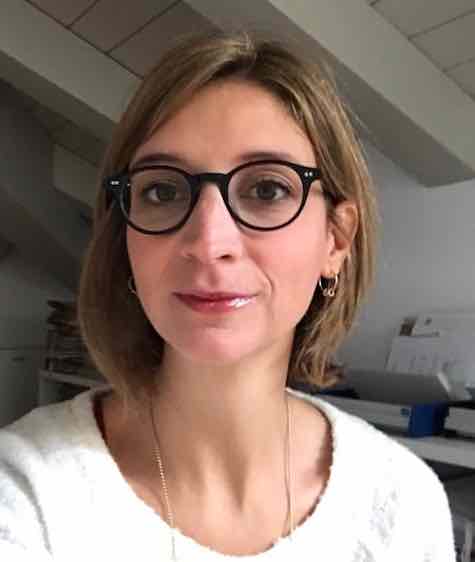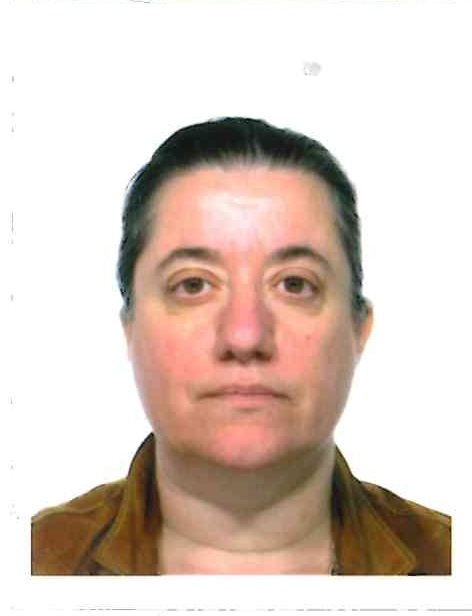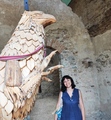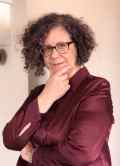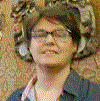Studying at the University of Verona
Here you can find information on the organisational aspects of the Programme, lecture timetables, learning activities and useful contact details for your time at the University, from enrolment to graduation.
Academic calendar
The academic calendar shows the deadlines and scheduled events that are relevant to students, teaching and technical-administrative staff of the University. Public holidays and University closures are also indicated. The academic year normally begins on 1 October each year and ends on 30 September of the following year.
Course calendar
The Academic Calendar sets out the degree programme lecture and exam timetables, as well as the relevant university closure dates..
| Period | From | To |
|---|---|---|
| I semestre (Lingue e letterature straniere) | Sep 30, 2019 | Jan 11, 2020 |
| Annuale (Lingue e letterature straniere) | Sep 30, 2019 | May 30, 2020 |
| II semestre (Lingue e letterature straniere) | Feb 17, 2020 | May 30, 2020 |
| Session | From | To |
|---|---|---|
| ESAMI LINGUE - sessione invernale | Jan 13, 2020 | Feb 15, 2020 |
| ESAMI LINGUE - sessione estiva | Jun 3, 2020 | Jul 25, 2020 |
| ESAMI LINGUE - sessione autunnale | Aug 24, 2020 | Sep 19, 2020 |
| Session | From | To |
|---|---|---|
| LAUREE LINGUE - sessione autunnale (a.a. 2018/19) | Nov 4, 2019 | Nov 9, 2019 |
| LAUREE LINGUE - sessione straordinaria (a.a. 2018/19) | Mar 30, 2020 | Apr 4, 2020 |
| LAUREE LINGUE - sessione estiva (a.a. 2019/20) | Jul 6, 2020 | Jul 11, 2020 |
| LAUREE LINGUE - sessione autunnale (a.a. 2019/20) | Nov 2, 2020 | Nov 7, 2020 |
| LAUREE LINGUE - sessione straordinaria (a.a. 2019/20) | Apr 7, 2021 | Apr 13, 2021 |
| Period | From | To |
|---|---|---|
| Festa Ognissanti (Lingue) | Nov 1, 2019 | Nov 1, 2019 |
| Sospensione delle lezioni | Nov 2, 2019 | Nov 2, 2019 |
| Vacanze di Natale (Lingue) | Dec 23, 2019 | Jan 6, 2020 |
| Vacanze di Pasqua (Lingue) | Apr 10, 2020 | Apr 14, 2020 |
| Festa della Liberazione (Lingue) | Apr 25, 2020 | Apr 25, 2020 |
| Festa del Lavoro (Lingue) | May 1, 2020 | May 1, 2020 |
| Sospensione delle lezioni | May 2, 2020 | May 2, 2020 |
| Festa del Santo Patrono (Lingue) | May 21, 2020 | May 21, 2020 |
| Sospensione delle lezioni | May 22, 2020 | May 23, 2020 |
| Festa della Repubblica (Lingue) | Jun 2, 2020 | Jun 2, 2020 |
| Vacanze estive (Lingue) | Aug 10, 2020 | Aug 15, 2020 |
Exam calendar
Exam dates and rounds are managed by the relevant Foreign Languages and Literatures Teaching and Student Services Unit.
To view all the exam sessions available, please use the Exam dashboard on ESSE3.
If you forgot your login details or have problems logging in, please contact the relevant IT HelpDesk, or check the login details recovery web page.
Should you have any doubts or questions, please check the Enrollment FAQs
Academic staff
 daniele.beltrame@univr.it
daniele.beltrame@univr.it
 bernardo.calabrese@univr.it
bernardo.calabrese@univr.it
 silvia.cavalieri@univr.it
silvia.cavalieri@univr.it
 riccardo.cella@univr.it
riccardo.cella@univr.it
 elisa.dallarosa@univr.it
elisa.dallarosa@univr.it
 katiuscia.darici@univr.it
katiuscia.darici@univr.it
 sara.dattoma@univr.it
sara.dattoma@univr.it
 jacopo.galavotti@univr.it
jacopo.galavotti@univr.it
 diegogabriel.krivochen@univr.it
diegogabriel.krivochen@univr.it
 stefania.montemezzo@univr.it
stefania.montemezzo@univr.it
 chunye.niu@univr.it
chunye.niu@univr.it
 simone.pregnolato@univr.it
simone.pregnolato@univr.it
 fabioantonio.scrignoli@univr.it
fabioantonio.scrignoli@univr.it
 tania.triberio@univr.it
tania.triberio@univr.it
 sonia.trovato@univr.it
sonia.trovato@univr.it
 francesco.zuin@univr.it
francesco.zuin@univr.it
Study Plan
The Study Plan includes all modules, teaching and learning activities that each student will need to undertake during their time at the University.
Please select your Study Plan based on your enrollment year.
1° Year
| Modules | Credits | TAF | SSD |
|---|
1st foreign language2nd foreign language1st foreign literature and cultureGerman literature and culture 1
2nd foreign literature and cultureGerman literature and culture 1
2° Year activated in the A.Y. 2020/2021
| Modules | Credits | TAF | SSD |
|---|
1st foreign language2nd foreign language1st foreign literature and culture or a related courseEnglish literature and culture 2
French literature and culture 2
German literature and culture 2
Spanish literature and culture 2
2nd foreign literature and culture or a related courseEnglish literature and culture 2
French literature and culture 2
German literature and culture 2
Spanish literature and culture 2
Italian literature and culture
Geography of communication and international trade
Modern and Contemporary Economic History
Theory and Techniques of communication
3° Year activated in the A.Y. 2021/2022
| Modules | Credits | TAF | SSD |
|---|
1st foreign language2nd foreign languagePrinciples of international marketing
| Modules | Credits | TAF | SSD |
|---|
1st foreign language2nd foreign language1st foreign literature and cultureGerman literature and culture 1
2nd foreign literature and cultureGerman literature and culture 1
| Modules | Credits | TAF | SSD |
|---|
1st foreign language2nd foreign language1st foreign literature and culture or a related courseEnglish literature and culture 2
French literature and culture 2
German literature and culture 2
Spanish literature and culture 2
2nd foreign literature and culture or a related courseEnglish literature and culture 2
French literature and culture 2
German literature and culture 2
Spanish literature and culture 2
Italian literature and culture
Geography of communication and international trade
Modern and Contemporary Economic History
Theory and Techniques of communication
| Modules | Credits | TAF | SSD |
|---|
1st foreign language2nd foreign languagePrinciples of international marketing
| Modules | Credits | TAF | SSD |
|---|
Legend | Type of training activity (TTA)
TAF (Type of Educational Activity) All courses and activities are classified into different types of educational activities, indicated by a letter.
Chinese language 1 (2019/2020)
Teaching code
4S003701
Credits
9
Language
Italian
Scientific Disciplinary Sector (SSD)
L-OR/21 - CHINESE AND SOUTH ASIAN LANGUAGES AND LITERATURES
The teaching is organized as follows:
Lezioni
Credits
6
Period
Annuale (Lingue e letterature straniere)
Academic staff
Esercitazioni linguistiche [cognomi A-L]
Esercitazioni linguistiche [cognomi M-Z]
Learning outcomes
The course aims to provide the basic elements of phonetics, writing and the basic sentence structure of the Chinese language. The aim is to introduce students to the elementary spoken and written Chinese, creating the conditions for an autonomous use of the putonghua (Standard Chinese). At the end of the course the student will be able to interact in simple conversations on daily life, to read and understand short and simple texts and will also have acquired the basic syntactic structures of the simple sentence and the formative principles of the Chinese characters, their classification and their structure. Students at the end of the course will have achieved a level of linguistic and lexical knowledge corresponding to an HSK2 certificate, ie an A2 level in the international classification.
Program
Introduction to phonetics, Chinese writing system, syntax of standard Chinese.
Main topics: Clause types; particles (modal particles and aspect particles); adverbs; pronouns and other substitutes; numbers and classifiers; nouns and noun phrases; verbs and verbal adjuncts; prepositional constructions; verbal complements (complement of result, complement of quantity, complement of duration); special structures (use of 是…的; use of 把; use of 被).
In-class exercises on grammar points and oral interactions, aimed at developing communication skills and widening students' lexicon.
Lectures involve the active participation of students through exercises and linguistic analysis of texts.
Applied language activities on writing, reading, listening and the development of oral proficiency are provided by mother-tongue teachers.
Textbooks:
Teng Wen-Hua, Yufa! A Practical Guide to Modern Chinese Grammar, London, Hodder Education, 2011.
Abbiati Magda, Zhang Ruoying, Dialogare in Cinese 1, Venezia, Libreria Editrice Cafoscarina, 2010 (Lessons 1-18).
Additional teaching material will be used and provided by the teacher during the lessons and uploaded on the e-learning page of the course.
Recommended Texts:
Abbiati Magda, Grammatica di cinese moderno, Venezia, Libreria Editrice Cafoscarina, 1998.
Romagnoli Chiara, Wang Jing, Grammatica d'Uso della Lingua cinese, Milano, Hoepli, 2016.
Recommended Chinese-Italian/Italian-Chinese dictionaries:
Casacchia, Giorgio; Bai Yukun, Dizionario Cinese-Italiano, Venezia, Libreria Editrice Cafoscarina, 2013 [only Chinese-italian].
Zhao Xiuying (a cura di), Il dizionario di cinese, Bologna, Zanichelli, 2013.
Zhang Shihua (a cura di), Dizionario di cinese. Milano, Hoepli 2007.
Recommended Chinese-English dictionaries:
Lin Yuan (ed.), The Contemporary Chinese Dictionary. Beijing, Foreign Language Teaching and Research Press, 2002.
Hui Yu (ed.), A New Century Chinese-English Dictionary. Beijing, Foreign Language Teaching and Research Press, 2004.
Kleeman Julie, Harry Yu, The Oxford Chinese Dictionary, Oxford, Oxford University Press, 2010
Recommended Apps: Pleco Chinese dictionary: www.pleco.com
Bibliography
| Activity | Author | Title | Publishing house | Year | ISBN | Notes |
|---|---|---|---|---|---|---|
| Lezioni | Magda Abbiati, Zhang Ruoying | Dialogare in cinese 1. Corso di lingua colloquiale | Libreria Editrice Cafoscarina | 2010 | 978-88-7543-275-1 | |
| Lezioni | Teng Wen-hua | Yufa! A Practical Guide to Mandarin Chinese Grammar | Hodder Education | 2011 | 9781444109139 | |
| Esercitazioni linguistiche | Magda Abbiati, Zhang Ruoying | Dialogare in cinese 1. Corso di lingua colloquiale | Libreria Editrice Cafoscarina | 2010 | 978-88-7543-275-1 |
Examination Methods
The final exam consists of a written test on grammar and writing, a listening test and a conversation in Chinese. Each part of the test has a ten-points worth. Students must obtain at least 6/10 points in each part of the test in order to pass the exam. All the parts of the exam must be passed in the same date: whoever wants or needs to repeat the exam must repeat all of its parts (written test, listening, and conversation).
The details about the test will be published on the e-learning page.
HSK certificates will not be accepted as a substitute for the exam or any of its parts.
At the end of the first semester, i.e. in the winter session of January-February 2020, a mid-term test (score not-registered) will be held on the first half of the programme. The modalities for the examination of the mid-term test are the same as those for the final examination described above. Even in the case of the mid-term test, the examination consists of three parts and students must achieve passing mark (at least 6 out of 10 points) to pass the exam. Students who pass the mid-term examination will need to prepare the second half of the programme for the final exam and the final mark will be the average of the two exams. Those who don't pass the mid-term exam must prepare the entire programme for the final exam.
Students who wish to decline the mark of mid-term exam should express such intention clearly writing from their university email address to the teacher’s university email address, within one week after the publishing date of exam results seen on e-learning webpage of the course.
The intermediate test will be valid for one year, until the second call of the session in January-February 2021.
Since attendance is mandatory, students who don't reach 60% of the attendance will not be admitted to the exam. Between 60% and 75% of the attendance, students must take an additional oral test on grammar topics. To justify non-attendance certificates proving a real and well-grounded reason (health, study or HSK certificates from level 2 to level 6) will be considered. These certificates should be submitted to the teacher before the exam.
Type D and Type F activities
| years | Modules | TAF | Teacher |
|---|---|---|---|
| 1° | Seminario metodologico di analisi del testo letterario [Gruppo 1] | D |
Andrea Zinato
|
| 1° | Seminario metodologico di analisi del testo letterario [Gruppo 2] | D |
Andrea Zinato
|
| years | Modules | TAF | Teacher |
|---|---|---|---|
| 1° 2° | History of English Literature (F-O) [Cognomi A-E] | D |
Annalisa Pes
(Coordinator)
|
| 1° 2° | History of English Literature (F-O) [Cognomi F-O] | D |
Annalisa Pes
(Coordinator)
|
| 1° 2° | History of English Literature (F-O) [Cognomi P-Z] | D |
Annalisa Pes
|
To discover all the teaching activities accredited by the foreign teaching college click here
Career prospects
Module/Programme news
News for students
There you will find information, resources and services useful during your time at the University (Student’s exam record, your study plan on ESSE3, Distance Learning courses, university email account, office forms, administrative procedures, etc.). You can log into MyUnivr with your GIA login details: only in this way will you be able to receive notification of all the notices from your teachers and your secretariat via email and soon also via the Univr app.
Student login and resources
Gestione carriere
Assegnazione tutore
Attività accreditate D/F
Calendario didattico dettagliato
Cambio lingua curriculare
Competenze informatiche
Competenze linguistiche (prima e seconda lingua)
Competenze linguistiche in triennale (terza lingua CFU F)
Compilazione del piano didattico
Corso di Lingua portoghese
Erasmus+ e altre esperienze all'estero
Linguistic training CLA
Presentazione dei corsi di studio e Open day
Graduation
List of theses and work experience proposals
| Stage | Research area |
|---|---|
| PROGETTO MAMBRINO Stage per bibliografia | Various topics |
Saperi minimi
Stage e tirocini
Nel piano didattico della laurea triennale in Lingue per il turismo e il commercio internazionale (L12) è previsto un periodo di stage obbligatorio (CFU 6) in organizzazioni imprenditoriali.
Le attività di stage sono finalizzate a far acquisire allo studente una conoscenza diretta in settori di particolare interesse per l’inserimento nel mondo del lavoro e per l’acquisizione di abilità professionali specifiche.
Le attività di stage sono svolte sotto la diretta responsabilità di un singolo docente presso studi professionali, enti della pubblica amministrazione, aziende accreditate dall’Ateneo veronese.
I crediti maturati in seguito ad attività di stage saranno attribuiti secondo quanto disposto nel dettaglio dal “Regolamento d’Ateneo per il riconoscimento dei crediti maturati negli stage universitari” vigente.
- Tutte le informazioni in merito agli stage per futuri studenti sono disponibili alla pagina Stage e tirocini.
- Tutte le informazioni in merito agli stage per studenti iscritti sono pubblicate in MyUnivr - come fare per - stage e tirocini.
- Tutte le informazioni in merito agli stage per le aziende sono disponili alla pagina Stage e tirocini per azienze.
Ulteriori informazioni al seguente link https://www.univr.it/it/i-nostri-servizi/gestione-carriere-studenti-lingue-e-letterature-straniere/stage-e-tirocini-lingue-e-letterature-straniere

 +39 045802 8409
+39 045802 8409






















